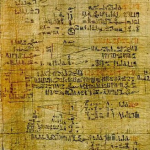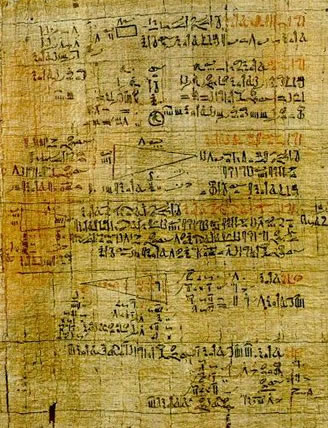
Category: Number Concepts and Number Operations
Suitable for Grade Level: Secondary
The Math in this Problem:
Egyptian Fractions are unique because they only possess numerators equaling 1. In this brainteaser, students will manipulate fractions in order to create a summation of Egyptian Fractions, starting with the largest possible term and ending with the smallest possible term.
The Egyptians only used fractions with a numerator of 1.*
Take the fraction 80/100 and keep subtracting the largest possible Egyptian fraction till you get to zero. Three Egyptian fractions are enough:
80/100 = 1/2 + 1/4 + 1/20
Do the same for 85/100, 90/100, 95/100, and if you are particularly fond of Egyptians, 99/100.

Egyptian Fractions were found on the Rhind Mathematical Papyrus.
This papyrus is a scroll that got its name from a sickly young man called Henry Rhind who bought the papyrus in Luxor, Egypt in 1858 shortly before his death at age 30.
The papyrus was written by a scribe called Ahmes sometime between 1600 and 1650 BC. He probably copied it from a still older source.
The papyrus is about 33 cm high and 5.6 meters long. Gay Robins & Charles Shute translate its initial lines as follows:
Correct method of reckoning, for grasping the meaning of things and knowing everything that is, obscurities… and all secrets.
Extensions:
Show that any fraction 2/N (where N is odd) can be expressed as the sum of two Egyptian fractions, one of which is the largest Egyptian fraction less than 2/N.
Fibonacci proved that if you keep subtracting the largest possible Egyptian fraction you will always get to zero in a finite number of steps. Is this true if you limit yourself to Egyptian Fractions with an odd denominator? Warning: This is an unsolved problem in mathematics.
*This is not quite true; the Egyptians also used 2/3, but we will ignore this little anomaly.
